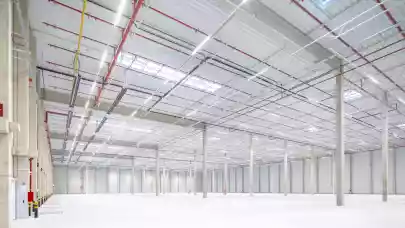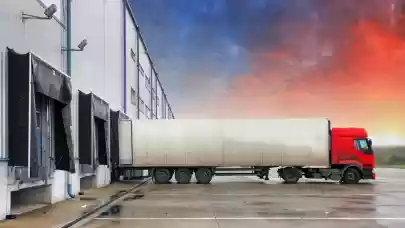
Attila Beer, Country Manager of Alukönigstahl Romania, spoke with Property Forum about the segments that will generate growth for the company, the price outlook on the commodities’ markets and Alukönigstahl’s solutions that can help companies in implementing their sustainability strategies.
This interview was first published in Property Forum’s annual listing of "The 50 most influential people on Romania’s real estate market”.
What are Alukönigstahl Romania’s business objectives in 2023 and what were some of the highlights of last year?
Generally speaking, I have been taught that the goal of a company is always to maintain or force a positive trend in sales, profit, and number of customers. Or when the market in which the company operates grows, we grow at a faster rate than the market. And the reverse is also true: when a market contracts, let our results fall less than the market. We have now entered a period in which the market in which we operate is showing signs of stagnation or even decline.
There is always opportunity for businesses with high-quality products and services. At the Munich Fair (BAU23) our company‘s main motto was Carbon Control, i.e. how we reduce CO2 emissions. The European Parliament has decided that from 2050 Europe should be CO2 neutral. Schüco takes this issue very seriously, from the design phase to the construction of buildings and their management, to the recycling of materials at the end of their life.
Which real estate segments will drive demand for the company’s products this year?
This year we see growth in public works and industrial investments. Specifically, we are making offers for airports, hospitals and industrial halls. The appetite for investment in offices is tempered for the time being but, according to real estate specialists, the vacancy rate is relatively low, which in standard conditions is an incentive to start investing in this segment. Residential investment is likely to stagnate for a while until interest rates fall to a level that gives investors comfort.
Which of Alukönigstahl’s solutions have been the most popular in residential projects?
Modern architecture requires large glazed areas, reliable movable elements and superior thermal and acoustic indoor comfort. While curtain wall solutions predominate in office buildings, windows, balcony doors and sliding doors together with shading solutions are the “stars” in residential buildings. It is worth noting that more developers, considering ESG factors, are demanding solutions with high energy efficiency, considering other features such as accessibility and easy handling of elements too.
Have commodity markets stabilized in the last 12 months? What is the outlook for the short and medium term?
The period of about 18 months when commodity prices, partly for objective reasons due to increased demand, partly for energy price reasons and partly for speculative reasons, were very volatile, is over. We are now seeing, at least in the area in which we operate, a cooling of the price. The reason is complex, from the negative effect of interest rates on investors’ decisions as well as on the end customer’s decision to buy real estate which means lower demand to lower energy prices.
How do you support the sustainability agendas of developers who want to have ESG-ready buildings?
Being a leader in innovative products we can contribute to the E (Environment) and S (Social) criteria of the ESG acronym. We have many solutions that put the well-being of beneficiaries first, such as decentralised ventilation systems with heat recovery or acoustic windows (which allow fresh air in but block noise from outside), and which can support the quality of buildings from an ESG point of view too. In terms of carbon footprint reduction, architects will have information from our calculation software about the carbon footprint of each Schüco product and will be able to easily calculate the footprint of the future building. If you reduce the energy needed for heating, you reduce your CO2 emissions. If you use shading and ventilation systems at night in summer, you reduce energy for air conditioning and thus reduce CO2 emissions. We have green façade solutions with living plants. This insulates thermally, soundproofs, and produces oxygen through photosynthesis. The electricity produced with the photovoltaic panels embedded in the opaque areas of the façade can be used in the building locally, thus decreasing CO2 emissions. The topic is very broad and we will deal with it extensively in the future.
What are the main real estate projects currently under development for which you supply aluminium, steel and PVC systems?
In the office segment, we mention the U Center 2, Arghezii Office, AFI Loft, Poșta Puișor and Bosch office projects. In the logistics area, we delivered our systems for Draxlmaier Timișoara, eMAG Hungary, Liebherr, Weidmüller, Dedeman, Kaufland and Lidl Aricești logistics centre. In the residential segment, we are suppliers for the Galileo Olimp, Unirea Iași, Cortina North and Cortina 126 complexes. Another interesting project we are currently involved in is the National Golf Club.
What are the major trends influencing the development of aluminium, steel and PVC systems?
Our partners Schüco International KG and Jansen AG are developing products that combine functionality (energy efficiency, zero thresholds for easy access, high-performance sound insulation, efficient shading, mechatronic actuation) with aesthetics (large elements, profiles with small visible widths). An important objective is processing efficiency for cost-effective production and reduced assembly time on site. Curtain wall solutions that allow for impressively large glazing or futuristic shapes, such as Schüco Grid 2 Shell or VISS 3, are in trend. Another theme is the greening of facades. Our solutions integrate green plant modules for both classic and modular curtain walls.
How can upgrading the existing stock of buildings become a new growth engine for suppliers in Romania?
We have a large mass of buildings with considerable energy loss through uninsulated windows, roofs or façades. Summing up the market in which we operate, a retrofit program for existing buildings would also offer great financial potential for changing windows. Such an initiative could also provide an opportunity for banks to finance it. If we want to reduce fossil energy consumption, renovating buildings would help more than making electric cars. This industry consumes enormous amounts of energy and water in the process of making batteries. In the end, the cheapest energy is the energy we do not use.
Digitalisation has become paramount in the property industry in recent years. What has been your approach to digital investments?
We already have long enough experience with technologies for window automation and access control for doors, for their integration into computerized building management systems. In the last year, our offer has been enriched with smarter solutions. For example, a project management solution – PlantoBuild is a working method that interconnects all participants in a project and facilitates the rapid exchange of information and allows tracking of all processes. Another step towards digitizing buildings is the Schüco IoF (internet of facades) solution, which, through Schüco IoF ID, stores information such as installation date, item type, mounting location or component list, for each element of a building envelope, allowing access to them for fast, secure and low-cost maintenance processes.



